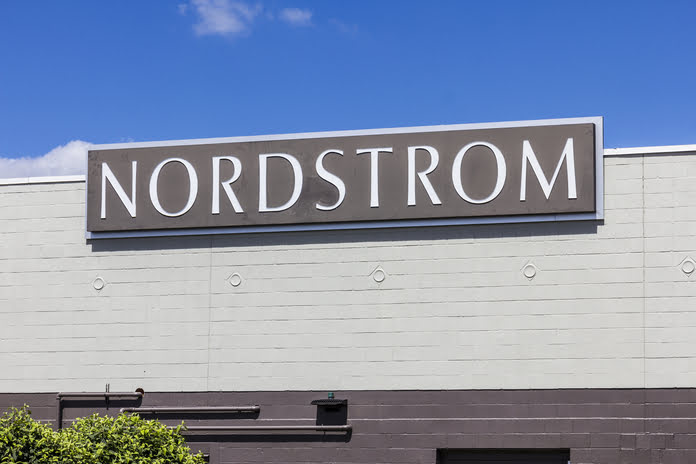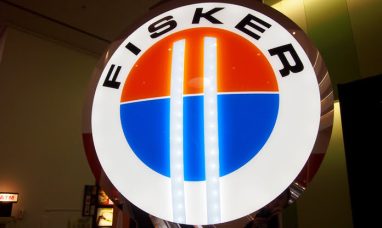Nordstrom Inc. (NYSE:JWN) has been grappling with weakening demand patterns attributed to reduced consumer spending within lower-income groups, a consequence of the challenging macroeconomic climate. This has exerted pressure on the company’s revenue performance across its retail banners. Additionally, the phasing out of its Canada operations has taken a toll on its overall performance.
Furthermore, the decision to discontinue in-store order fulfillment for Nordstrom Rack’s digital orders, effective from the third quarter of fiscal 2022, has adversely impacted the banner’s sales.
Given these headwinds, Nordstrom anticipates a 4-6% year-over-year decline in total revenues for fiscal 2023. These revenue figures take into account a 250-basis point impact from the closure of its Canada operations and a nearly 130-basis point gain from the 53rd week.
The ramifications of these ongoing challenges are reflected in the company’s stock price. Shares of Nordstrom have depreciated by 25% in the past year, in stark contrast to the industry’s growth of 5.6%. Furthermore, the stock has lagged behind the sector and the S&P 500, which have seen growth rates of 8.2% and 14.5%, respectively.
Is There Potential for a Comeback?
Despite concerns of subdued demand and decreased discretionary spending, Nordstrom is actively pursuing measures to regain its footing. Its endeavors to enhance the performance of Nordstrom Rack, boost inventory efficiency, and optimize its supply chain are promising.
Nordstrom is committed to improving efficiency and enhancing the customer experience through faster order fulfillment. The company is on track to reduce inventory and fine-tune its product assortment. Increased focus on the Nordstrom Rack banner, backed by strategic brand expansion, is showing promise. With an improved product assortment and the opening of new stores, Nordstrom Rack’s performance is expected to see sequential improvement throughout 2023. Additionally, the Rack banner aims to enhance productivity, reduce transportation costs, shorten delivery times, and improve services through faster delivery.
Nordstrom Rack’s decision to scale back in-store order fulfillment and raise the minimum order amount for free ship-to-store delivery on rack.com has led to fewer order cancellations, streamlined operations, and improved profitability. Looking ahead, Nordstrom Rack continues to concentrate on introducing more premium brands, enhancing assortments, and increasing brand awareness. These efforts are expected to optimize the product mix at Nordstrom Rack by mid-2023.
Nordstrom has also been actively working to enhance the customer experience through expedited delivery, particularly during its Anniversary sale. In the second quarter of fiscal 2023, variable supply-chain costs decreased by over 100 basis points for the fourth consecutive quarter, resulting in overall SG&A deleverage. The supply-chain optimization initiatives, which began in early 2022, have delivered significant benefits to customers and operational efficiencies. Supply-chain costs per unit fell 5% year-over-year in the second quarter, despite inflationary pressures.
Looking ahead, Nordstrom (NYSE:JWN) is committed to pursuing additional efficiencies in flow and improved productivity through its inventory management initiatives.
The company is focusing on its long-term strategy, leveraging its digital-first platform to better serve customers, gain market share, and drive profitable growth. This strategy encompasses three key areas: winning in the most important markets, expanding the reach of Nordstrom Rack, and enhancing digital velocity. Nordstrom is implementing the “closer-to-you” strategy, which aims to link stores and services to expedite deliveries, expand online offerings, and introduce more affordable merchandise at its Rack off-price stores to enhance the shopping experience for customers.
As part of this strategy, Nordstrom has provided a long-term outlook, anticipating low-single-digit annual revenue growth, with operating income expected to outpace revenues in the long term. The company aims for an EBIT margin of over 6%, annual operating cash flow exceeding $1 billion, and capital expenditure between 3% and 4% of sales.
Additionally, as it enters fiscal 2023, Nordstrom’s management is focused on enhancing the customer experience, improving Nordstrom Rack’s performance, boosting inventory productivity, and advancing its supply-chain optimization efforts. The company is confident in the strength of its brands and its ability to drive profitable growth while delivering long-term value to shareholders.
Nordstrom anticipates an adjusted EBIT margin in the range of 3.7% to 4.2% of sales, a favorable comparison to the prior year’s reported figure of 3.3%. Adjusted earnings are projected to be between $1.80 and $2.20 per share, excluding charges related to the wind-down of its Canada business. Earnings per share, including wind-down-related charges, are expected to fall between 60 cents and $1.00.
Featured Image: Megapixl © Jetcityimage








